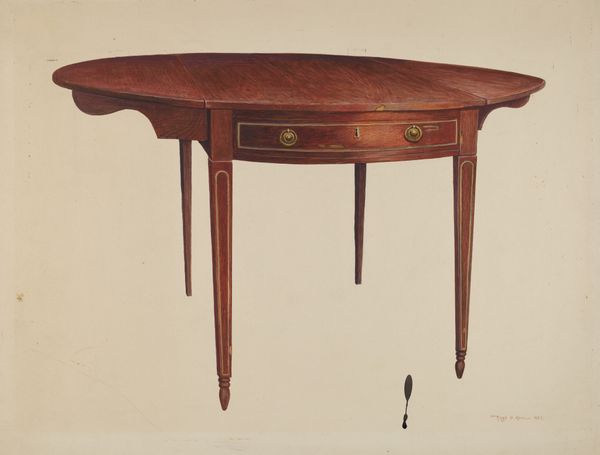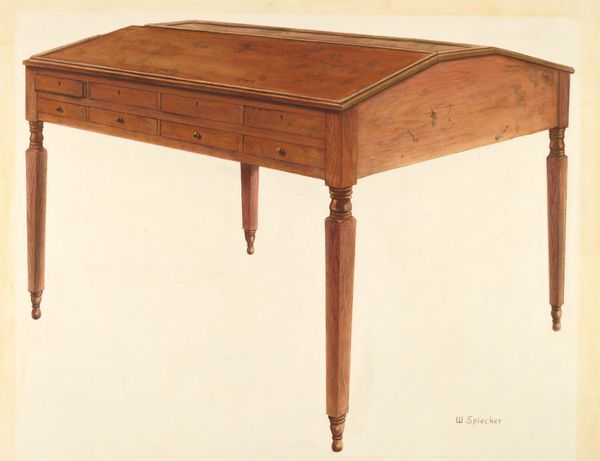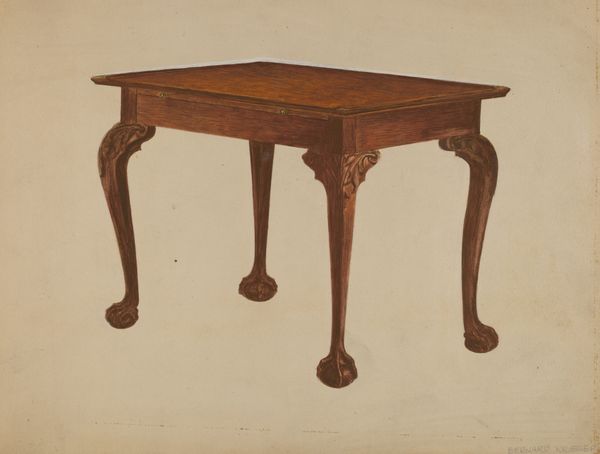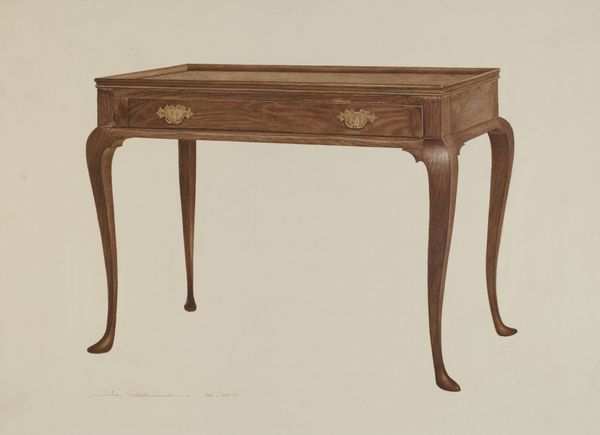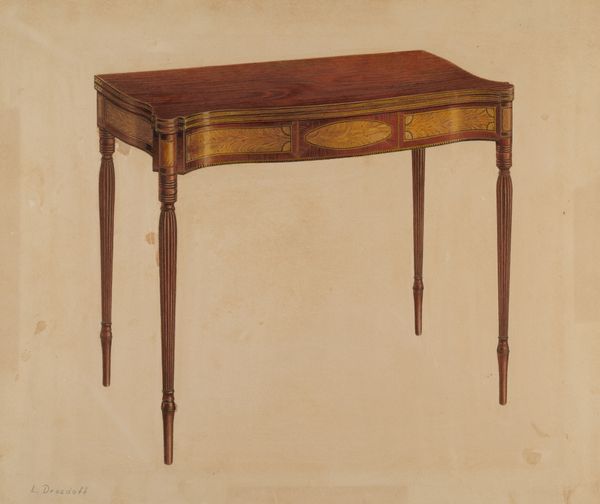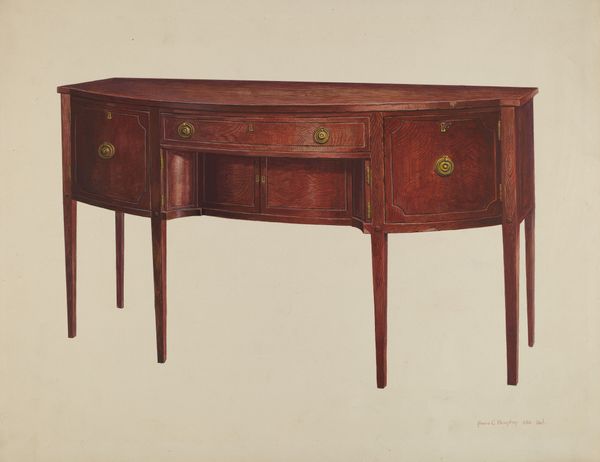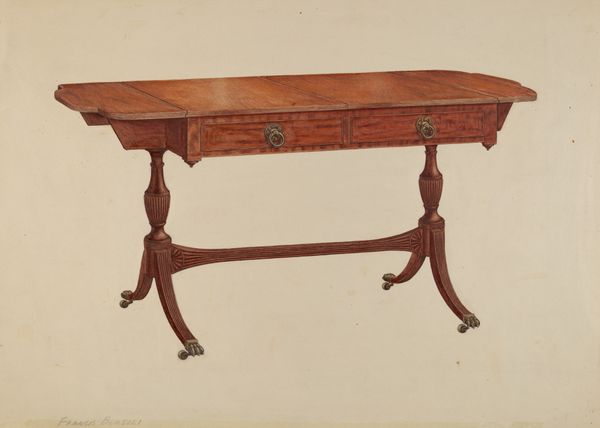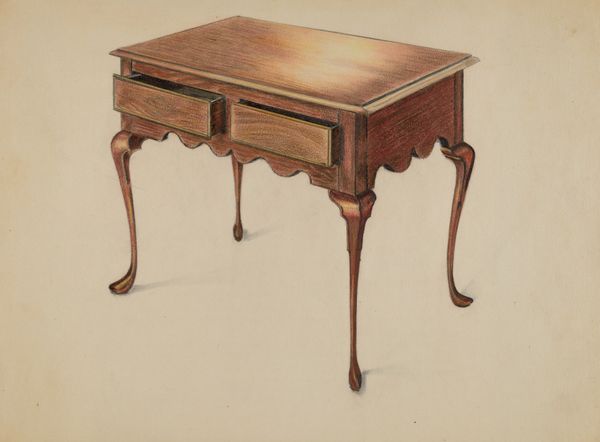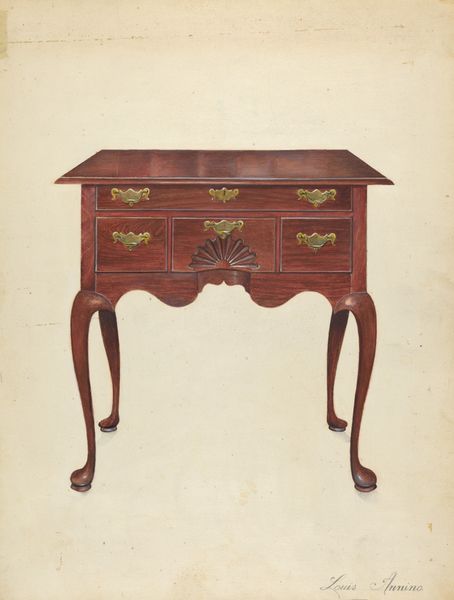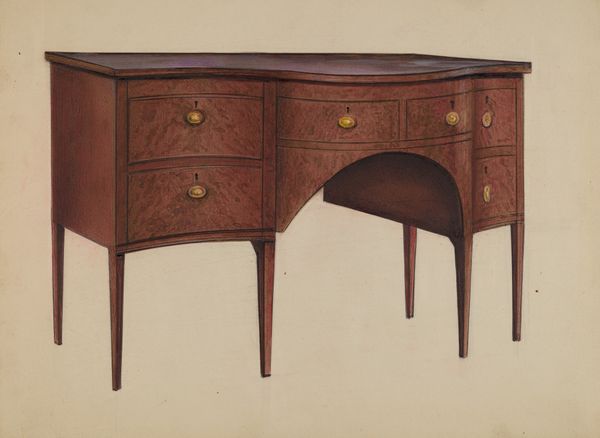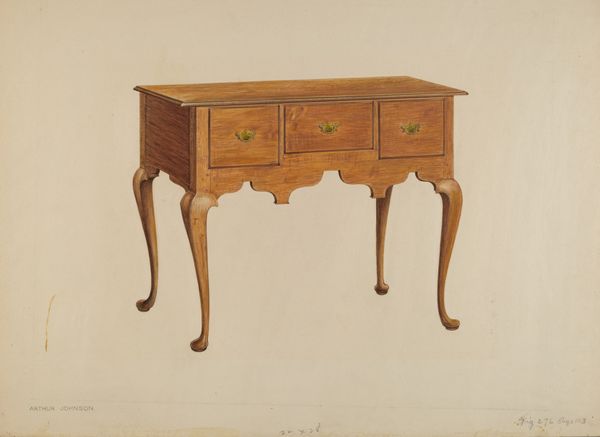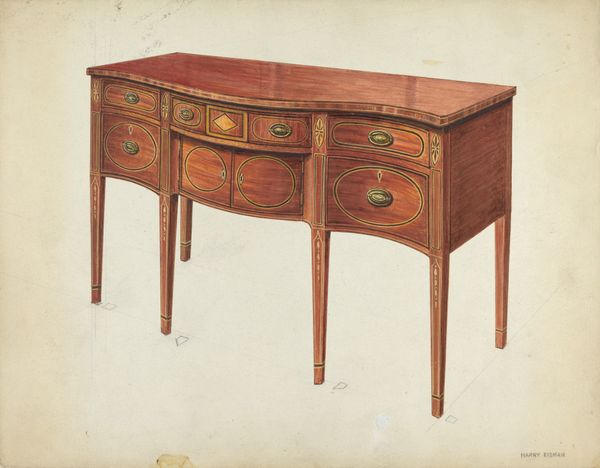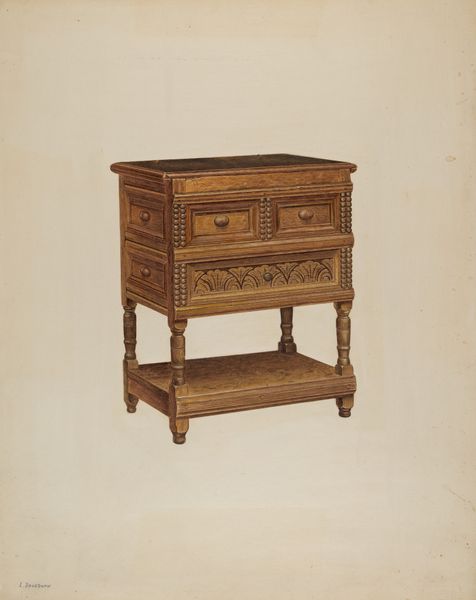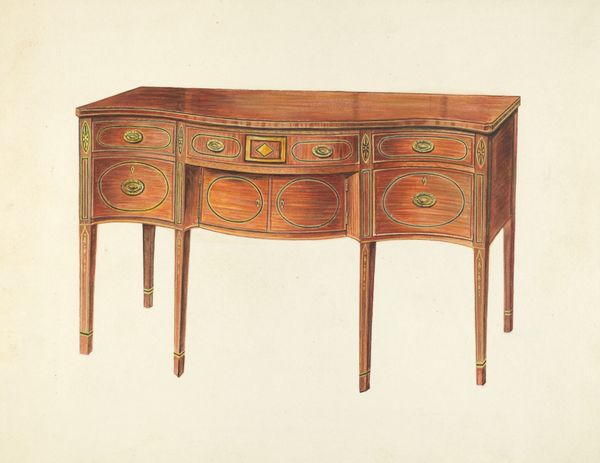
drawing, watercolor, wood
#
drawing
#
yellowing background
#
wood background
#
watercolor
#
wood
#
watercolor
#
realism
Dimensions: overall: 36 x 51.2 cm (14 3/16 x 20 3/16 in.) Original IAD Object: 44 1/4" wide; 27 3/4" deep; 29 7/8" high
Copyright: National Gallery of Art: CC0 1.0
Editor: Here we have Archie Thompson's "Bishop Hill: Tailor's Table," created around 1939. It's a watercolor and drawing on wood that depicts... well, exactly what the title suggests. It's striking how detailed the wood grain is. What can you tell me about it? Curator: It's more than just a pretty picture of a table. Let's consider what a tailor's table represents. It’s a site of labor, often hidden, where clothing – a key marker of identity and status – is constructed. This piece was created during the Great Depression; think about what clothing production and repair meant for communities struggling with economic hardship. Who had access to tailoring, and what did their garments signal? Editor: So you're saying it hints at class divisions? I hadn't considered that. I was just thinking about how nice the wood looked. Curator: The choice to render the table with such care is intentional. Thompson wants us to examine not just the object but its context, its history. This object existed in a specific place at a specific time; it was used by real people for a tangible craft that had a place in the socioeconomic framework of the region. What happens when we understand art this way? Editor: We start questioning who benefits, who gets left out… it definitely complicates a simple image! It makes me think about the labor involved in making everything around us, even something seemingly simple. Curator: Exactly. Now imagine the hands that used this table, the stories it could tell... Art provides an entryway into thinking critically about our world. Editor: This has really changed how I view this drawing! I appreciate the reminder that art is never truly separate from its historical and social reality. Curator: And remembering that history can alter how we experience the art itself.
Comments
No comments
Be the first to comment and join the conversation on the ultimate creative platform.
